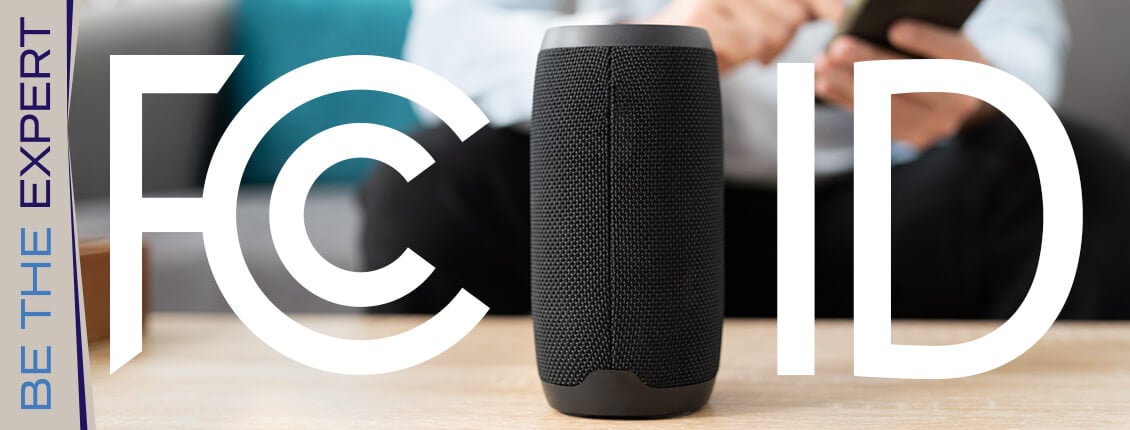
Understanding What an FCC ID Is and Why It’s Important
Getting your products onto market can be a stressful time. There are plenty of hurdles, but they don’t have to be a major headache. Something that may be important to know before you must deal with it is your products’ FCC ID.
An FCC ID is a federal identification for any electronic product that can oscillate above 9 kHz. This identification protects consumers and other products. If your products need this identification number, it’s time to learn everything you need to know about it.
What is FCC ID?
An FCC ID is an alphanumeric code, meaning it will contain both letters, numbers, and occasionally dashes separating the two. They’re usually between 7 and 25 characters long. They’re usually on the product label, near any other labeling for the device.

These IDs are from the Federal Communications Commission. The FCC is a government agency started in 1934 to regulate both interstate and international radio, television, wire, satellite, and cable communications. Their records are searchable by using the FCC ID on your products.
If a product has a radio frequency it should have an ID. This means all pieces of computer hardware, digital cameras, power adapters, garage door openers, and more have their own ID number.
These devices undergo testing to make sure they won’t interfere with other radio signals or harm the user in some way. Products that require an FCC ID fall into 2 groups:
• Intentional, such as smartphones, are products that must broadcast radio frequency energy to operate.
• Unintentional, such as digital cameras, are products that can put out radio signals as an accidental result of use, but it’s not a main feature.
All electric devices are required to be tested and verified by the FCC. The manufacturer can receive a monetary fine and their products will be recalled if they’re sold without the proper certification.
Product Testing
What is the proper testing for your electronic products? The FCC has created a website to answer all your questions and provides the steps to get proper certification.
- The first step is determining if your product needs testing. Read the FCC rules to determine which apply to your product.
- Next, if your product is subject to the FCC rules, find out the specific type of authorization. In some cases, a product may have different functions which means multiple types of approval procedures.
- Now it’s time for compliance testing. Products approved using SDoC (Supplier’s Declaration of Conformity) do not require testing at an FCC-recognized accredited testing laboratory. However, products approved under the Certification procedure are. You can find currently FCC-recognized testing labs on at the following link.
Product Approval
With testing done and your product compliant, it’s time to finalize the approval.
- Products approved using SDoC are responsible for making sure each piece of equipment complies with applicable FCC rules, will maintain the proper documentation, and will prepare a compliance information statement to go with the product at the time of marketing. Those products approved under the Certification route are a bit more involved. Generally, the manufacturer is the responsible party and must obtain the FCC Registration Number (FRN) to identify the company. The same registration number will be used for future appeals as well. After getting the FRN, you will get a Grantee Code by applying at the Grantee Registration website. You’ll file an application for a grant of certification with a Telecommunication Certification Body (TBC). The application requires information about the product. The TBC will review the application and supporting information to make sure the product complies with the FCC requirements. Once the TBC makes a decision, the supporting information is uploaded to the FCC Equipment Authorization Electronic System (EAS) Database. Finally, a grant of certification is issued by the TCB on the FCC EAS Database.
- Now, you can label your product and provide the required customer information. If you need more information, you can visit the Labeling Guidelines website. You’ll need to maintain all the documentation for your records and make sure that the products maintain compliance.
- If you’re importing your products into the US, you’ll need to follow the FCC importation requirements as well.
- Any changes to your products may mean they require additional approval. If you’re needing guidance on that, this link may be helpful.
Getting your products their FCC ID may be time consuming, but it’s better to tackle that challenge early rather than wait and be noncompliant.
How to Find Your Product’s FCC ID
While it’s good to know how to get your product an FCC ID, how can you find it after you’ve acquired one?
An FCC ID has two parts: a grantee code and an equipment product code. The grantee code is either a 3 or 5 character alphanumeric string that represents the Grantee. It’s the code you got after obtaining your FRN while applying for the FCC ID. The product code begins after the grantee code.
If you go onto the FCC website, you can find the search page. By imputing both the grantee code and product code, you’ll be able to find your specific FCC ID.
Conclusion
Getting an FCC ID for your electronic products may take some time, but it’s worth it. Some websites even require the code to list products. With a little bit of research and planning, getting your code doesn’t have to be a headache.
If you’re wanting a little bit of help getting your products onto the market or figuring out site compliance, visit Petra’s website and to see Petra’s selection of electronics, visit order.petra.com.
